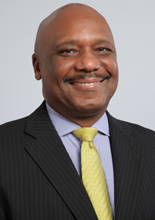| NYC Resources | 311 | Office of the Mayor |
|
|
Important notice on data breaches affecting some HHC patients |
From Socks to Sutures: Seeking Savings on Hospital Supplies
In a Q&A, Executive VP and COO Antonio Martin describes how HHC is flexing its purchasing mega-power for goods and pharmaceuticals that will yield $50 million in savings for the public healthcare system. As HHC Executive Vice President and Chief Operating Officer, Antonio D. Martin is always looking to find operational efficiencies that strengthen HHC’s financial viability and protect its mission to care for all New Yorkers regardless of their ability to pay or immigration status. Here, Mr. Martin speaks about HHC’s new, more efficient and transparent centralized procurement program that leverages the enormous buying power of the 11-hospital public healthcare system. Q: What type of supplies do you buy at HHC? A: Everything and anything you can imagine that’s needed in a healthcare facility – from gloves and sutures to services like printing and snow removal. We also have contracts for pharmaceuticals; we dispense millions of doses of medications every year for inpatients and fill 2.3 million prescriptions in our outpatient pharmacies. Q: How much does that cost? A: Our annual cost for thousands of goods, equipment, services, pharmaceuticals and other resources necessary for patient care for all HHC facilities runs about $500 million. Q: Why did you centralize purchasing? A: Until recently, most of the purchasing and contracting was done locally, based on individual facility needs. We clearly realized that we had a huge opportunity for savings and efficiencies if we combined our purchasing mega-power to demand better prices. In fact, we expect to see at least $50 million in savings the first year. Q: How did you do it? A: We embarked on a complex reorganization and put in place a centralized procurement process and team that can ensure our facilities have what they need, when they need it. This team has the savvy to negotiate best prices and the input of clinical and business experts to ensure the products we buy are high quality and preferred by our staff. Q: You said this was a complex undertaking. Why? A: Think about it: HHC is a huge, integrated healthcare delivery system that serves 1.4 million New Yorkers each year. That requires an enormous amount of medical supplies, services, and equipment – about 58,000 different items. And every facility has their preferences; every doctor has their preferences. Some like 2-inch adhesive tape, others like 3-inch, and still others like 4-inch. We pulled together clinical and administrative leaders to agree on a smaller list of preferred items that present value without compromising quality. I’m proud to say we created a new system that will help to eliminate wasteful redundancy and unnecessary variability. Q: How did you get staff to agree on what to buy? A: Our employees are driven by our mission. They understand that without a financially viable and efficient organization, our mission is at risk. Everyone recognized the potential to leverage economies of scale. For each product category, such as perioperative services, we set up a Value Analysis Committee, an interdisciplinary team of physicians, nurses and key administrative staff experts. We asked them to evaluate product selections, focusing on quality, cost, service and outcomes. Q: Can you give us examples of the items you streamlined? A: Sure. Let’s consider socks. Yes, socks. The kind you wear when you are in a hospital. We use different socks, different colors, some with double-tread and some with single treading. Our new purchasing office teamed up with our nursing leaders to make a choice. We are now going to use a yellow sock to symbolize patient “fall risk” and double-treaded socks which are universally recognized as safer for our most fragile patients. That means we are standardizing care and saving nearly $30K. Q: How do you save money on purchasing and still preserve quality and safety for patients? A: Quality and safety are always our primary goal. The savings have to come only after those standards are established. Q: Can you give us an example? A: Take, for instance, all the products used to prevent and treat wounds and skin sores. We organized a team of nurses who work in wound care, infection control and staff education. Together, they created a standardized, best practice model of care that also includes the selection of the best quality skin products that will be used by everyone across our system. A perfect combination of quality, safety and efficiency. This will result in $1.2 million in savings from those products. But the improvements in the care approach for patients will be priceless.
| ||||||
HHC 2014 Stats
- Staffed Beds: 6,684
- Clinic Visits: 4,472,960
- ER Visits: 1,179,436
- Discharges: 205,791
- Births: 18,564
| Copyright 2015 The City of New York | Contact Us | Privacy Policy | Terms of Use |


